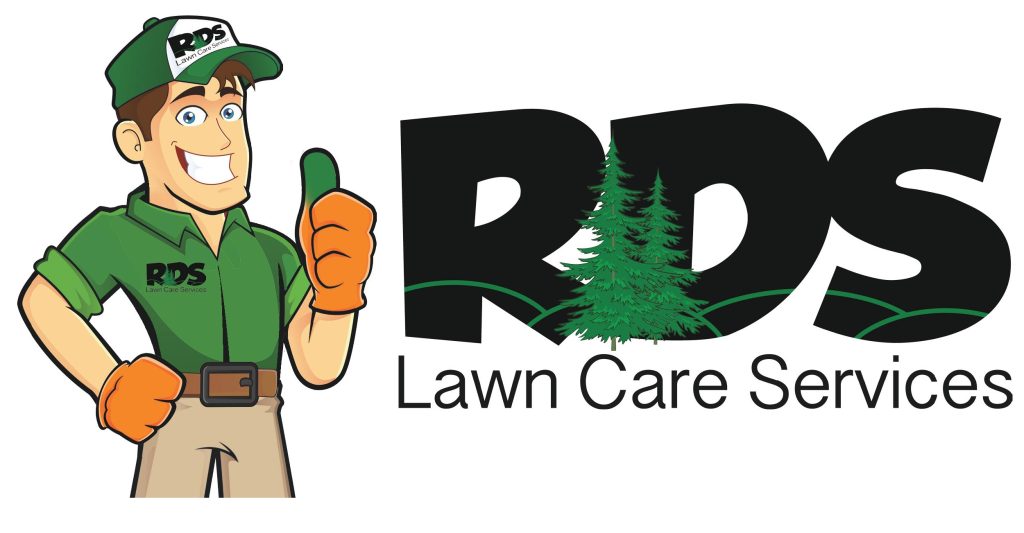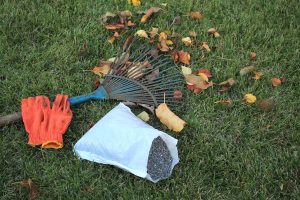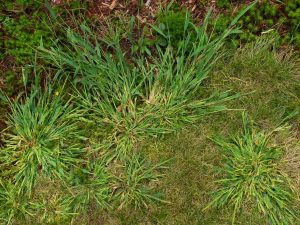This is Aaron Suttenfield, with RDS lawn care, and I’m showing you a video real quick. I am actually testing my sprinkler system today. To see how How long should I have to run this zone to receive one inch of water per week. in my yard. Remember, we want to get an average of an inch to an inch and a half of water per week. And my system is going to run for about 30 minutes here. And if you’ll notice, I’ve got these little white circles in the yard, those are actually little bowls that I took out of the house. They’re all styrofoam bowls. And I’ve actually set those throughout the yard. And I am letting the system run for about 30 minutes in this zone, I’ve got six of these bowls. And I’m testing I’m a measure at the end of this time, and see how much water’s in those bowls. And then that’ll tell me how long my system has to run to achieve one inch of water, then I’ll take that time divided by the two times per week that I want to run my system. And I’ll water my yard for that long. After that, so just want to show you this quick little experiment, I’ve got six of these little white styrofoam bowls. And I’m currently collecting the water as the system runs. If you have you can see these heads, I don’t know if you can tell on the video. But these are multi-stream rotating heads. These are called MP rotators. And these have little multi streams. So this is one type of head that you could have in your system. Another type of head would be a fixed spray head or misting head, those are heads that pop up and they just spray out a fixed spray pattern they don’t move. So you would want to test that zone. As well as if you have the large rotating stream heads just one stream of water that’s spraying across back and forth, you would want to test all three of those, all three of those systems to achieve to see if see how much it takes to achieve one inch of water. So this is the first step. I’ll let it run for 30 minutes. And then I’ll check back with you and show you how much water we’ve collected. and then we’ll know at that point how long a zone with these types of heads needs to run to achieve one inch of water. So we’ll check back with you here. Once this is done. Okay, we’re back here. And I’ve actually pulled two of these bowls. And I’m gonna go around to the others and measure them. But I just wanted to show you that might be hard to see on here. But I’ve run my system for 45 minutes. And it took me 45 minutes on my zone to reach one inch if you look.
So let’s go over here. And let’s measure a couple of other bowls. So it may be a little difficult in the yard, let’s see if we can get them to the leveled with this one. Just a little under an inch right here and then, let’s level up this bowl real quick and this is gonna get us, that one’s right on the edge. and that bowl is right at an edge. So as you can see, I ran this zone for 45 minutes. And I achieved an inch of water in that 45 minutes. And so we can run this particular zone for half that time to achieve about a half-inch and then we can run it again later in the week. For the other half to get the full one edge. And we say one inch of water per week may need a little bit more than an inch of water as we get into the really hot periods of the time periods of the summer. So, you know if you were to double that time, you know 20-22 minutes in this particular case, is going to reach approximately a half-inch of water. So if I got really stressed with only doing one inch of water per week, I may add an additional time or bump that time up and double the duration on that. So that’s the best way to tell how long it takes your system to reach one inch. And, you know, again, these are multi-stream rotating heads, it would take a fixed spray head less time than that, because it does not move, and it may take a single stream. Again, the single-stream is moving back and forth in one stream, rotating head it may take it a little longer to reach one inch. So you know the amount of pressure your system has all those things factor into how much water your system puts out. So do not go and set your timer based on what I just did in my yard. Because that may not be what your yard needs, it could be too much or not enough. So I just wanted to show you what it would take to properly calibrate your system to put out one inch of water for everyone. If you have any additional questions, please reach out to us and let us know we’d be happy to try and help you answer those. But this is the proper way to calibrate your system to determine how much water does your system put out. First. Thank you so much.




